#and then the muses in Hercules are a nice middle ground
Text
Greek chorus alignment chart
Legally Blonde the Musical - Chaotic Good
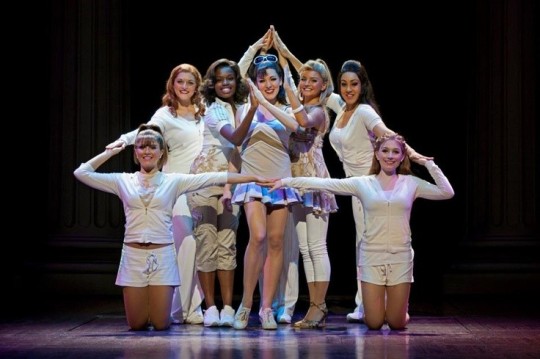
Hercules - Chaotic Neutral
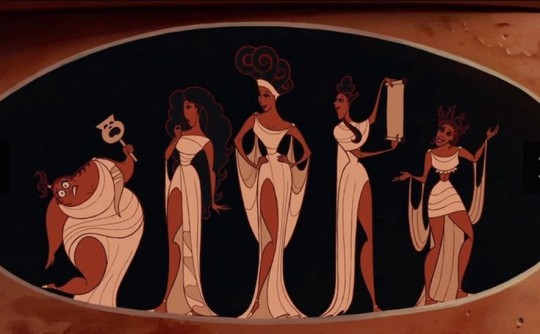
Hadestown - Chaotic Evil
(edit: I've been told they fit the "lawful evil" role better, or even the "true neutral one", and I agree, but for the sake of consistency, I assigned them the chaotic evil allignment. This post isn't really serious I made it mostly in a humorous way)
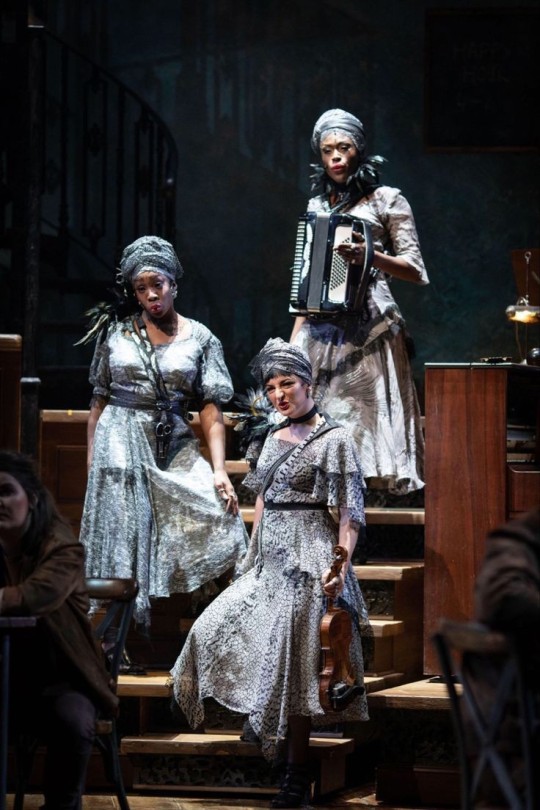
#i was thinking about the fact that two of my favorite musicals have a group of women who sing in the protagonists head#and i was like wait a minute#and then the muses in Hercules are a nice middle ground#musicals#broadway#hadestown#legally blonde the musical#hercules disney#greek chorus#alignment chart
113 notes
·
View notes
Text
Anonymous asked: Thoughts on Jane Birkin? - Talented elegant actor-musician-model? Overrated at everything but she was pretty? Or, never thought about it, but she did design a nice bag for Hermes?
My thoughts about Jane Birkin is that she is and will always remain an all round feminine icon. Plain and simple.
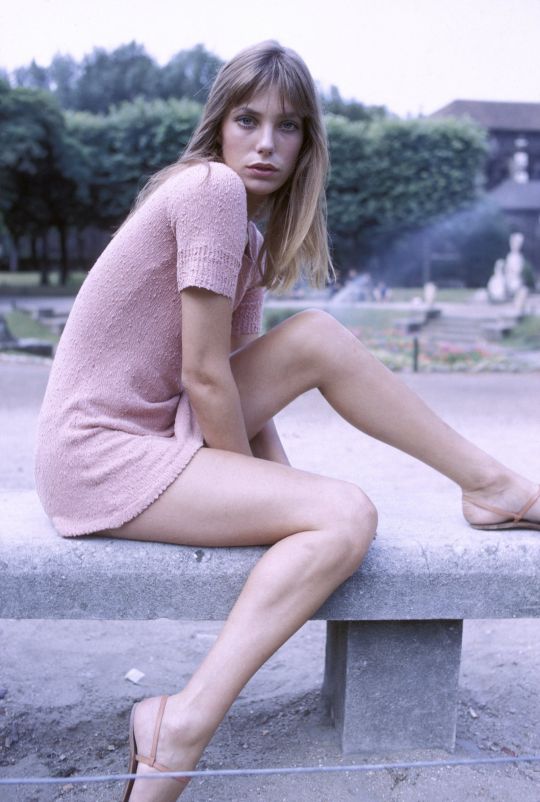
That’s not just my contrarian view because she was an icon that overlapped into my grandparents’ and parents’ generation of the late 60s and 70s but it’s also the view of many French today too. I knew of her because her songs alongside Françoise Hardy and other French chanteuse were always playing on my parents stereo system growing up overseas. Indeed so well-documented is the love affair between Jane Birkin and Serge Gainsbourg, that to picture it retrospectively is to watch a flickering series of film stills in one’s mind. Enter the young British actress in 1970s Paris, basket swinging nonchalantly from one arm, baby daughter clasped carefully in the other, dancing down Boulevard Saint-Germain with the thoughtful French musician’s adoring figure at her side. They loved, smoked and fought fervently, their ten-year-long affair an archetype of that between musician and muse in bohemian Paris, and 40 years after its dissolution, the French still can’t get enough.
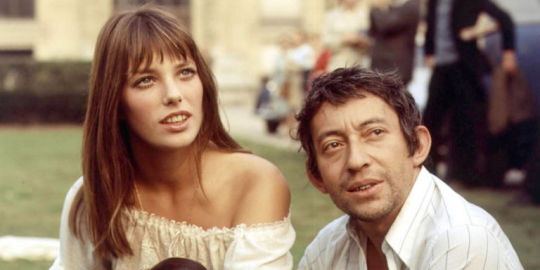
As you allude to in your question, she has famously said of herself and Serg Gainsbourg that, “He was a great man. I was just pretty.” Which has led a small minority - especially those in her native England - to be dismissive of her as a long forgotten pretty face of the 70s and who was over-rated because she was nothing without riding on the coat tails of the crooning bad boy, Gainsbourg. On the face of it it was a very disingenuous remark to make because Gainsbourg was indeed a great man (as a musician and French cultural male icon) but she was so much more than a pretty face. I strongly suggest that she was just being her usual self-deprecating Anglo-self and one who remains to be a tad embarrassed at 73 years old to be continued to be lauded as a genuine timeless French style and chanteuse icon.
No one can doubt that Jane Birkin has always had some talent as an artist. Birkin has enjoyed a long career in the arts as a singer, songwriter, actress, and director. Her longevity is one proof of her staying power. Arguably though, it is her reputation as a style icon, and more specifically being the namesake of the iconic Hermès Birkin bag for which she is best known today. She might well have been Gainsbourg’s baby doll (his words) but she was very much her own popular muse and actress.

This may surprise many but Jane Birkin has appeared in over 70 films over several decades. As an actress it is often forgotten how good she is because most of her films were made in France and she rarely did films outside of France.
She was already known even before she hooked up with Gainsbourg. She was born in 1946 to an actress mother, Judy Campbell, and her Royal Navy lieutenant-commander and spy, David Birkin. Her mother was an acclaimed actress of her generation and muse to the older Noel Coward. She had a typical upbringing that one might call comfortably posh upper middle class. She was already married at 17 to film composer, John Barry (yes, the same John Barry who composed all the music for the James Bond films and other Hollywood films (Out of Africa, Dances with Wolves, Cotton Club etc) in 1965 but divorced in 1968 with custody of their daughter. Birkin quickly became part of the swinging London scene in the 1960s and appeared briefly in a handful of films.

Birkin was already well known but it was her nude turn in Michelangelo Antonioni’s 1966 film Blow-Up that really put her on the map. Even today it’s seen as one of the iconic films of the swinging sixties.
She famously arrived in Paris unable to speak French with her newborn daughter in her arms. The story goes that she was offered the lead role in the 1968 French film Slogan alongside Gainsbourg after sobbing through her screen test. Starring alongside Serge Gainsbourg, Birkin performed with him on the movie’s theme song. It was on that film set that they would begin their truly passionate relationship as well as artistic collaborations throughout the 1970s.
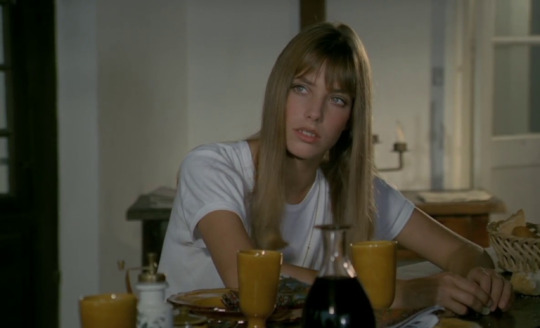
Indeed a year later in 1969 they both released the song that has forever defined them both to non-French people around the world, the duet “Je t’aime…moi non plus” which was met with scandal and disapproval by the Vatican and banned in many countries.
It may have solidified Birkin’s status as the British-born emblem of French chic but in all honesty it also drowned out her notable acting talents. Although Birkin took a brief hiatus from acting to return as Bardot's lover in the 1973 film Don Juan or If Don Juan Were A Woman (for which she got rave reviews because she held her own against Bardot),

it was only until 1975 in Gainsbourg’s own first film Je t’aime…moi non plus that her acting was properly honoured. Again, because of the damn song, people forget that she was nominated for Best Actress César Award (The French version of the Oscars or the Brit’s version of the BAFTAs). To be nominated for a César as best actress in a culture of truly talented actresses is saying something.
This wasn’t a flash in the pan. She was nominated again in 1984 for Best Actress César Award for her role as Alma in La Pirate - directed by her then partner, Jacques Doillon with whom she did another critically acclaimed film La Fille Prodigue (1981). Her work led her to work on stage with critically acclaimed directors such as Patrice Chéreau. She worked with director Herbert Vesely on Egon Schiele Exzess und Bestrafung in 1980, appearing as the mistress of Austrian artist Egon Schiele, played by Mathieu Carrière. Jacques Rivette collaborated with her in Love on the Ground (1983). The jury of the 1985 Venice Film Festival recognised Birkin's performance in Dust as amongst the best of the year, but decided not to award a best actress prize because it was decided by the jury that all of the actresses they judged to have made the best performances were in films that already won major awards - Dust won the Silver Lion prize so she lost out.
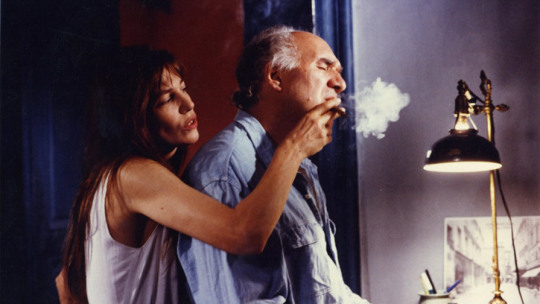
In 1991 she was again nominated for a César Award but this time as best supporting actress in the classic La Belle Noiseuse directed by Jacques Rivette and starring Michel Piccoli and Emmanuelle Béart.
She did of course English films but much more sporadically. She put in a famous turn in both the delightful Hercule Poirot movies starring Peter Ustinov, Death on the Nile and Evil Under the Sun. She also appeared in Merchant Ivory's A Soldier's Daughter Never Cries (1998) (which also used her song "Di Doo Dah”). In 2016 she had the lead role in La femme et le TGV, a short film directed by Swiss filmmaker Timo von Gunten. The film was nominated for an Academy Award for Best Live Action Short Film. I believe after it was widely reported that she had no plans to return to acting.
I think it’s the parochialism of the Anglo cultural world that has led to this misconception that she wasn’t an actress of note when in fact she has always been up there with the best of French actresses of her generation.

As a singing icon she has been frozen in time. Her fame for one song have clouded a proper critical appraisal of her singing talents. And I think here I have to be honest and say that her critics - from a purely singing technical point of view - might have a point her being over hyped. Not that Jane Birkin ever said she was a great singer as she described herself self-deprecatingly as singing through more keys than a locksmith.
As a singer, Birkin is of course is known for that song that cheekily and perhaps even enviously reinforces the tropes the non-French world have about the French and amour. In 1969, she and Gainsbourg released the duet "Je t'aime... moi non plus" ("I love you ... me neither"). Gainsbourg originally wrote the song for Brigitte Bardot. But Bardot famously declined to sing the track because she found it "too erotic" and she was married at the time.
Although Birkin started out in films, she preferred to focus more on singing than acting. This was primarily because of Serg Gainsbourg who saw Birkin as his muse and wrote songs for her. She released an album in 1975 entitled Lolita Go Home and in 1978 called Ex Fan des Sixties, with the help of Gainsbourg's songwriting. Her music was successful in France, but not in her home country of England. She has made more than a dozen albums, nearly all in French and perhaps one or two in her native English.

One cannot escape the nagging feeling when I listen to some of her albums - really the later ones - that if she had attempted a career as an English recording artist, she would have stayed a minor singer. If fished out of her small pond and dropped into the music ocean, then Birkin would surely in the words of one music critic, “be engulfed by the plankton of mediocrity”.
And so the troubling truth that must be faced is that because she has been granted access to the ranks of the iconic, it is more because of our interest in the intriguing liaison she had with the maverick Gainsbourg more than anything else.
There is no doubt that her marshmallow accent, reedy voice and modern look made Jane Birkin a singing idol. She has a sense of discretion that is inversely proportional to her dazzling repertoire, which is studded with such astounding masterpieces as ‘Je t’aime… moi non plus’, ‘Swimming Pool’, ‘The Pirate’ and ‘Les dessous chics’. But her later recordings such as Le Symphonique, in which she is accompanied by a 90-piece orchestra - are mostly re-worked recordings of her songs with Gainsbourg who had died in 1991. Or take her 1996 album Arabesque which featured re-workings of Gainsbourg’s music, along with instrumentals backed by five Arabic musicians. Nearly all her later albums are quite mediocre.

This isn’t her fault so much as it is the musical artistry of Gainsbourg. He was the puppeteer behind the promulgation of this 'veule aesthetic', this aesthetic of weak plaintive croaking. But he was perhaps the first French singer who knew that manipulating the media would lead to manipulating record sales. Gainsbourg once had a job punching holes into métro tickets on Paris' underground before this ‘poinçonneur de lilas’ went on to almost single-handedly drag France's chanson tradition into the postmodern age. He sat in the opposite corner to the great chanson Musketeers: Leo Ferré, Georges Brassens and Jacques Brel. Gainsbourg is known in France for having cast himself in twin roles: Gainsbourg the musician and Gainsbarre the provocateur.
But there is also a definite divide in his musical production with a pre-1971 period that has a foot in chanson with driving melodies and Boris Vian narratives and the other foot in the fledgling pop tradition, and a post-1971 period that was driven more and more by dodgy electronic drumbeats, tiresome perpetual punning, and repetitive allusions to la femme enfant and Lolita-esque love (his last partner, Bambou, was 30 years his junior).
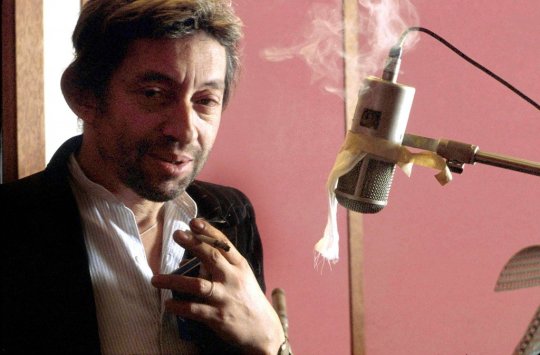
It remains difficult, therefore, to see how anyone with an ear for melody could think that much of Gainbourg's non-chanson output is melodiously pleasing. Much of his production seems so excruciatingly the work of an ageing pervert with personal hygiene issues.
My French friends, including one of my apartment neighbours in particular - of an older generation with whom I’ve grown close to - will put me through the wringer for saying anything bad about Gainsbourg and Birkin as singers. I just feel no one should be above a critical appraisal. Worse, it becomes very difficult to say anything critical for fear of being told that you just have not understood Gainsbourg's genius (surely Jarvis Cocker and Portishead can't be wrong!) But in reality there is very little to understand. He gave up trying to sing early on - the songs I really do like and find interesting - and quickly became the one-trick pony until his unfortunate death in May 1991 at 62 years old: a suggestive lyric about a questionable relationship here, a pun on every other word as an excuse for poetics there, slurred together with the voice of a sneering old man. The man stood out, broke away from troubadour-like folklore, but ultimately a tad mediocre.

The truth is Birkin without Gainsbourg was never much of a truly great singer. Combined with their public spats, Birkin reportedly grew tired of Gainsbourg's drinking and melancholy habits, so much so it became impossible to live with. They separated in 1980 despite never being married, despite reports of the contrary. Birkin later said that their friendship and his songwriting improved after they split. “You could talk back to him for once,” she said. “You were not just his creation any more.” As much as she was his muse, she was Pygmalion to his Prof. Henry Higgins. But the sad and prosaic truth is that without his unique style of songs to carry her limited singing range she was dreadfully exposed outside of Gainsbourg’s repertoire.
This was brought home to me when I listened to her cover version of Cohen’s iconic song, ‘Hallelujah’. Cohen's lyrics tell of David composing a song in praise of God, he describes the euphony that 'hallelujah' forms in his prayer, "the fourth, the fifth, the minor fall, the major lift." Birkin on the other hand warbled her way through. As she said once of her singing, she went through more keys than a locksmith.

Does Jane Birkin fare better as a style icon? Yes, she does. Absolutely.
To understand the Birkin bag one has to understand how Jane Birkin a Parisienne fashion style icon without her necessarily wanting to be one.
The quintessential trope of Parisienne woman is a conflation we likely owe to the framing of the 1950s and ’60s mavens of French popular culture like Françoise Hardy, Catherine Deneuve, and Brigitte Bardot as French icons, but who remain eminently tied to Parisian mythology - their reverence to a billion-dollar fashion archetype (thank you LVMH) is as reductive to the real women of Paris as it is to the women aspiring to be them. Of course this kind of Parisienne chic exists - a walk down the rue du Faubourg Saint-Honoré in the 8th arrondissement of Paris should satisfy the many star struck ‘American Emily’s’ coming to Paris (what a God awful Netflix drama it is).
But like London or New York or even Rome and Milan, there is no such thing as one Parisian style. There’s a plurality of Parisian styles and personalities - that’s obvious from walking the different arrondissements of Paris.
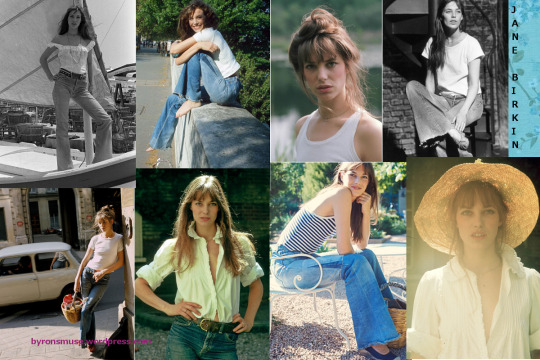
Jane Birkin in her day brought her own style to fit her British personality that was a far cry from the elegantly and expensively dressed mavens. From her laissez-faire fringe, to her layered necklaces, vintage denim, peasant blouses and white t-shirts, she wowed Parisienne women.
Today if you ever wander around Paris looking at the younger girls - or look at French young girls sporting their Paris street chic style on instagram or other social media - they call it Paris street chic. It’s not fashion, it’s a street style.
It’s really bunch of every day clothing items and accessories stylishly thrown together. So it’s not surprising to learn that the original source of French street chic started with Jane Birkin. It was Birkin who ‘pioneered’ the kind of off-duty dressing you now see all over the streets of Paris. I say pioneered but the truth is she dressed for herself without even wanting or trying to become a French style icon.
Still as fashionistas will tell you, Birkin was always several decades ahead of the style curve (easy for them to say). It was stylish but above all it was timeless. It amuses me no end that when one sees doe eyed American girls who are so enamoured by French girl fashion but don’t realise they owe their thanks to an English girl.
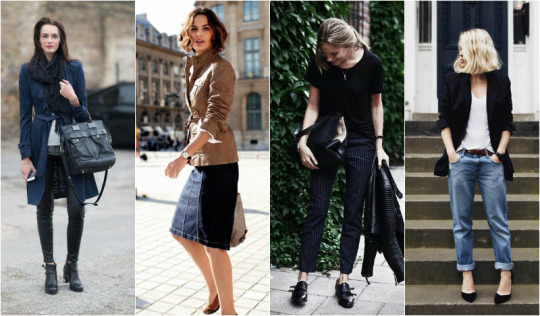
I’m sure it amuses Birkin too because she always thought her Haute-hippie style and free spirit was her way to insulate her personal insecurities about how well dressed and stylish haute bourgeois Parisian women were in their Chanel and YSL clothing. Her style is her own, as she said to Vogue, “I buy things often, but I sleep in them for two weeks, and then they really look quite rough.”
If there is common ground between the elegantly dressed mavens of high end brand fashion houses and the ultra casual minimalist street wear it is around the very simple Parisian quality of simplicity. Simplicity - not necessarily in colour or print but in the total look. Simple but important enough for a younger generation of Parisienne women should be free to express themselves free from the grips of a generations-old myth.
In a nutshell if Birkin’s style and influence endures it’s because her style is about simplicity.

Nevertheless her place as a style icon rests upon a simple straw basket (or wicker basket). However, in 1981 a chance encounter on a plane would result in the straw basket’s replacement by the world’s most desired leather bag - the Hermès Birkin bag.
In the 70s she was mainly known for her use of a straw/wicker basket which she used instead of a regular handbag. She was famous for her straw basket as she went everywhere with it, even dancing at the most exclusive of clubs or eating at the finest dining places. She carried all kinds of bits and bobs, including baby milk bottles, diapers, and baby change wear as well as collecting trinkets on her journeys around Paris. It was seen as a stylish English eccentricity by the Parisians.
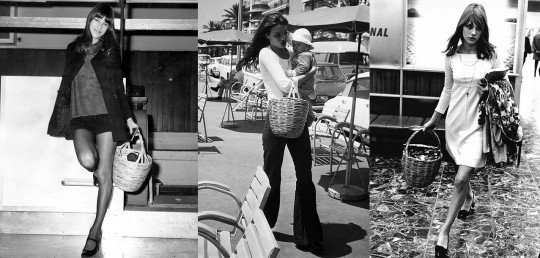
There is famous story about Jane Birkin and her straw basket that has entered into legend. The straw basket bag’s anonymous shape and generous size lent it to concealment, so when, during a lavish Christmas evening spent at the famous Parisian Bistro Maxim’s with Gainsbourg, the young English actress slipped a few pieces of the institution’s fine monogrammed crockery into it, nobody batted an eyelid. It was only later, when the basket slipped from her wrist while signing an autograph and sent her stash of china flying across the floor, that she was found out. In a perfect act of Parisian discretion a kindly waiter collected it up for her and replaced it in the basket. “A gift from Maxim’s,” he is reported to have whispered to her. “If you require more, you only have to ask.”
In 1981, Birkin was on a short flight from Paris to London. Carrying her famous straw basket, she placed it in the overhead compartment of her seat. However, the lid of the basket opened, and the contents spilled all over the floor and on the seats around her. Sitting next to her and assisting her in retrieving the contents of her basket was the late executive of Hermès, Jean-Louis Dumas. Birkin complained to Dumas that she was unable to find a suitable leather weekend bag that she liked. According to folklore, the remainder of the flight consisted of the pair designing a bag together and sketching ideas on an air sickness bag.
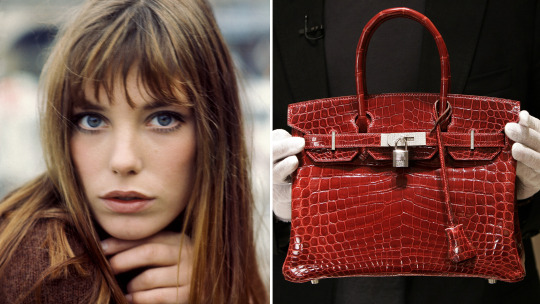
Fast forward three years and a prototype handbag was developed and presented to Jane Birkin – the Hermès Birkin bag. The bag, crafted from supple leather and handmade in France by a single, highly trained artisan, and takes up to 24 hours to complete. Designed specifically to provide ample room for jet-setting women, the bag quickly became a fashion icon and status symbol for women worldwide. The Birkin bag comes in a range of sizes, leathers, exotic skins, and hardware, with new colours introduced each season and limited edition versions of the bag crafted occasionally.
Since the creation of the very first Birkin bag, Jane Birkin had always carried one. However, true to her unique style and fashion, she continually customised her bags with beads, trinkets, protest stickers, and other titbits to create a unique look. Birkin even defaced her namesake’s bag on Japanese TV in 2008. The fashion icon repeatedly stamped on a tan-coloured Birkin bag to make it look “unique.”

Not surprisingly, the customisation of the Birkin bag caught on quickly and “defacing” Birkin bags is now a modern and trendy pastime practiced by D list celebrities including Kim Kardashian, Tamara Ecclestone, and many of today’s so-called fashion icons and social media style influencers.
Commendably Birkin auctions off her complimentary Birkin bags from Hermès for charitable causes. She often works with Amnesty International on humanitarian issues and donates her yearly royalties for the Birkin bag (approximately $50,000 per year) to a charity of her choice. Jane Birkin has said she now rarely uses the famous handbag that bears her name. In an interview with the BBC she told the BBC that if, like her, she used to fill the bag with "junk... and half the furniture from your house, it's a very, very heavy bag. Now I fill my pockets like a man, because then you don't actually have to carry anything."
In typical Jane Birkin style, she doesn't own one.
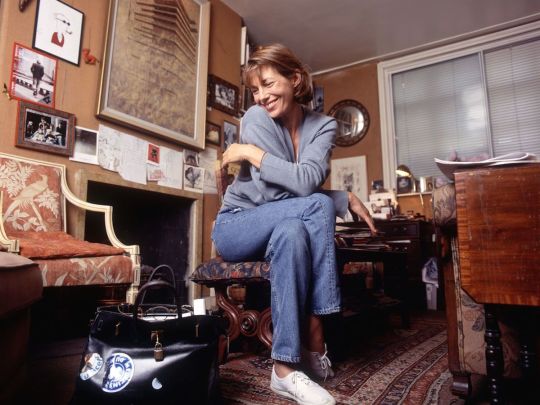
Jane Birkin will always be France’s favourite “petite Anglaise” as she was often known. And therein lies the clue why she remains beloved French icon despite her being English for two main reasons that come to mind.
Firstly, I suspect it’s because of her remarkable quality to be down to earth and cheerfully optimistic in public. Above all she displays a wonderful talent for mocking herself and not taking herself seriously. When for instance she was invited to take a role in a theatre production of a play by the 17th-century French writer Marivaux, she thought she was in a play by Marie Vau! The French have always been beguiled by her because of the stardust of the Sixties.
Despite Birkin being diagnosed with leukaemia in 2002, she said she conducted her life and love affairs with “an absolutely unfounded optimism”. That is not in doubt. With the recent publication of her diaries (Munkey Diaries 1957-1982 - a fantastic read) a more fuller picture has emerged that have further endeared her to the French.

Birkin was always riddled with insecurities, “I think I’m nothing, I’m persecuted by women who I love more than myself... Oh for the face of Nastassja Kinski, of Fanny Ardant, oh, the talent, the courage, the qualities. I have nothing interesting to say...” Above all she was convinced she was “suffering from mediocrity and no personality”, and wanted above all was to be loved. England never gave her that love, France did so happily. Even today France openly loves her.
Secondly, the French, especially the Parisians, love her because she embraces the French way of life with gusto and gaeity. Birkin speaks French fine but she stumbles in her heavily accented French. But she doesn’t mind and neither do the French. She was schooled in England into a culture where it’s okay to stumble, to try and fail, to be less than perfect. However, the old, rote, didactic, shame-based French schooling system dies hard. French people are often afraid to speak English unless they can feel assured it is impeccable at the same time - alomost in contradiction - they feel put out by foreigners who simply speak English to them without even having the courtesy to speak a little French, they think it rude and respond accordingly. But Birkin is so transparent and open to falling flat on her face that I think the Parisians find it strangely endearing.
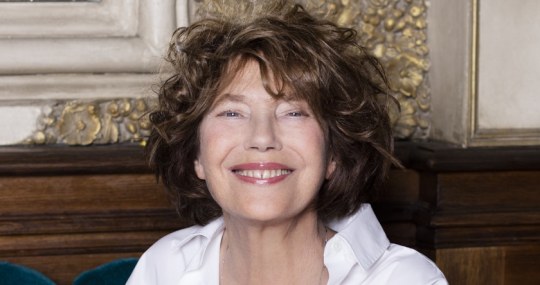
Birkin is that living truism that you don’t have to be French to be a Parisian icon of style and especially when beauty pertains to age.
Outside of native born French women, Brigitte Bardot, Françoise Hardy, Catherine Deneueve, Jeanne Moreau, Fanny Ardant, Juliette Binoche, Inés de la Fressange and one or two others (Isabelle Huppert is an outlier of arthouse chic style), there have been other non-French women besides Jane Birkin who have personified Parisian chic and style: Sylvia Vartan, Charlotte Rampling, Nastassja Kinski, Kristin Scott Thomas, and Carla Bruni, to name but a few. Each has come to embody ‘Parisian style’ without ever being raised here but now very much live and breathe the Parisienne spirit.
Just as importantly Paris, like French culture as a whole, values beauty especially as it ages. There are many seasons to women as there are to make fine wine. This is one reason why Jane Birkin endures even at the age of 73 years old. Style icons like Jane Birkin and others like Inés de la Fressange (who was the face of Chanel for so long and is now going strong at 63 years old) have given a well deserved middle finger to the notion that there is a codified set of rules for fashion and beauty for women over 50 years old.
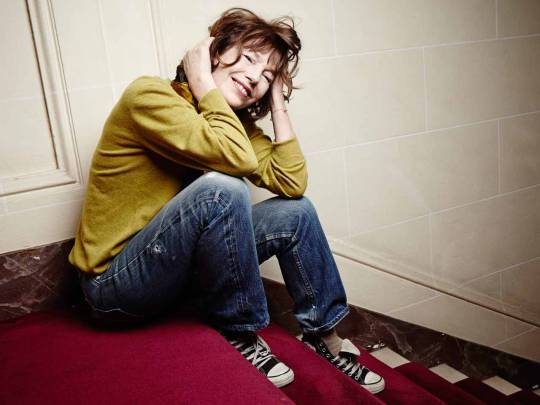
Indeed this is one of the secrets of living in Paris, it knows how to renew and refresh itself without losing its unique identity e.g. the model and actress Jeanne Damas, is arguably this current generation’s Jane Birkin and all power to her.
The stylish contributions of all these iconic women, and especially Jane Birkin, is a testament of why the allure of Paris as a cultural centre will continue to endure seamlessly because it values the aesthetic truth that true style is beauty that timelessly matures.
Birkin said once she was in no doubt she would always be best known for her erotic record Je t'aime, moi non plus. Of course she under sells herself as she has always done because she is so much more.
Compare her to modern style icons. Kim Kardashian would be the nearest but her fame as a style icon rests on one cynically contrived (and boring) sex tape, a narcissistic family TV reality show, and being married to a grossly deluded rap singer. I don’t think the modern day airheads are true style icons but fashion victims because as Yves Saint Laurent once memorably put it, “Fashions fade, style endures”.
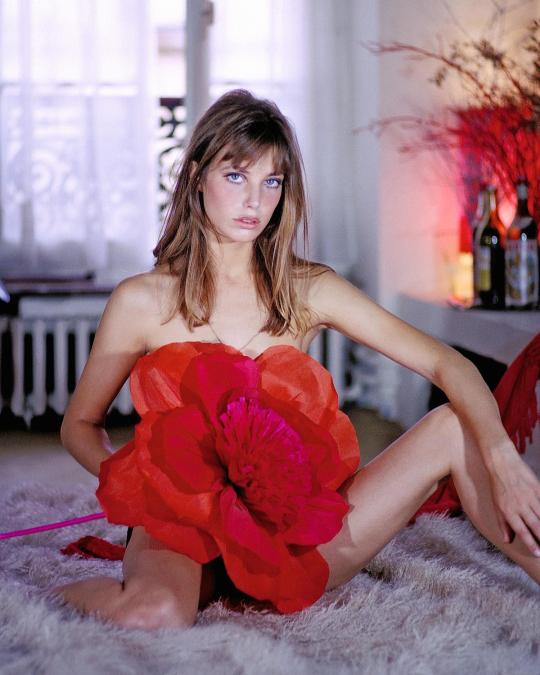
Jane Birkin will endure. Her contribution to French cultural life has been immense. The gap-tooth smile that looks irrepressibly cool, the messy fringe, the long string bean legs, the ability to elegantly wear denim for any and every situation, the reason she made a lowly wicker basket her bag of choice all year long. We may never know why, but honestly it’s not worth questioning at this point because it was so seriously chic - is one even allowed to say the word chic again? When it comes to Birkin, it’s a word that bears repeating.
Birkin might cheerfully be accepting of the fact that for an older generation much of her fame still rests on one scandalous song but for the contemporary generation it will be the Hermès Birkin bag.
"It's a rather extraordinary record," Birkin said once. "Perhaps more interesting than the bag." I daresay Serg Gainsbourg would agree about the song and the bag.
Ah yes that bag. The Birkin bag. To me it’s not a fashion item but a life saver.
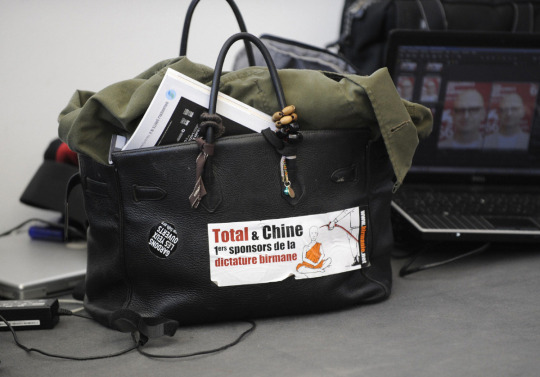
From mothers juggling diapers and milk bottles whilst chasing after their toddlers in stores to busy career women hurriedly scooping up and stuffing in reams of files, phone and lap top while rushing off their feet to their next meeting all can thank ‘la petite Anglaise’ for her Birkin bag.
I know I do. I use mine for a work lap top, mobile phone, work files and folders, pens, chewing gum, girls stuff (make up kit and tampons), a spare pair of knickers, sun glasses, gloves, an apple, a bottle of water, playing cards, a cigar case (and cutter and lighter), and a few books to read when I fly on a business trip.
Thanks for your question.
#question#ask#jane birkin#serg gainsbourg#icon#birkin bag#paris#parisienne#style#music#fashion#paris street chic#culture#society#england#1960s#personal#france#film#femme#beauty
176 notes
·
View notes